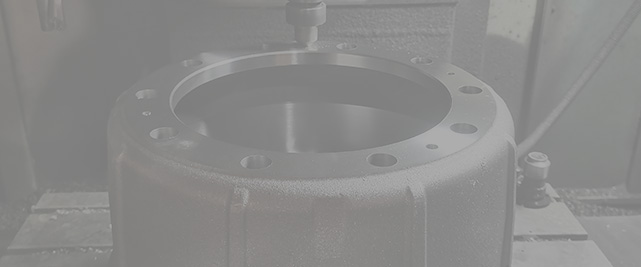Nov . 18, 2024 16:31 Back to list
remove rear brake drum
How to Remove the Rear Brake Drum A Step-by-Step Guide
Removing the rear brake drum of your vehicle can seem daunting at first, especially if you are inexperienced with automotive repairs. However, with the right tools and a bit of patience, you can successfully complete this task. This article will walk you through the steps necessary to remove a rear brake drum, ensuring your brakes are in top shape while saving you time and money.
Understanding the Brake Drum System
Brake drums are a crucial component of a vehicle's braking system, primarily found in older vehicles or light trucks. They work by using friction to slow down the vehicle through brake shoes that press against the interior of the drum when engaged. Over time, brake drums can wear out or become damaged, necessitating removal and replacement.
Tools Required
Before you start, gather the following tools and materials - Jack and jack stands - Wheel chocks - Lug wrench - Brake drum puller (if needed) - Hammer - Crowfoot or adjustable wrench - Screwdriver - Brake clean solvent - Safety goggles and gloves
Step 1 Prepare Your Vehicle
1. Secure the Vehicle Park your vehicle on a flat, stable surface and engage the parking brake. Place wheel chocks behind the front wheels to prevent the vehicle from rolling. 2. Loosen the Lug Nuts Using a lug wrench, slightly loosen the lug nuts on the rear wheel where you will be servicing the drum. Do not remove them completely at this stage.
Step 2 Raise the Vehicle
1. Jack up the Vehicle Position the jack under the rear axle or designated jacking point per the owner's manual and lift the vehicle until the rear wheel is off the ground. 2. Install Jack Stands Place jack stands under the vehicle for safety, ensuring it is securely supported before proceeding.
Step 3 Remove the Rear Wheel
1. Remove Lug Nuts Finish removing the loosened lug nuts and take off the rear wheel, allowing full access to the brake drum assembly.
remove rear brake drum

Step 4 Inspect the Brake Assembly
1. Examine the Brakes Before removing the drum, take a moment to inspect the brake assembly. Look for signs of wear, damage, or leaks in the brake components. This can help you understand any further necessary repairs.
Step 5 Remove the Brake Drum
1. Check for Retaining Screws Some brake drums are held in place with retaining screws. If present, use a screwdriver to remove these screws. 2. Remove the Drum Attempt to pull the drum straight off the hub. If it doesn’t budge, it may be stuck due to rust or debris. 3. Use a Hammer and Puller Gently tap around the perimeter of the drum with a hammer to break the rust seal. If it’s still stuck, consider using a brake drum puller, which provides leverage to help remove it.
Step 6 Clean and Inspect the Drum
1. Clean the Drum Once removed, clean the inside and outside of the drum using brake cleaner to remove dust, grease, and debris. 2. Inspect for Damage Check for scoring, cracks, or wear. If the drum is damaged, it is best to replace it rather than attempt to reinstall it.
Step 7 Reinstallation
1. Replace or Reinstall If the drum is in good condition, you can reinstall it. Align the drum onto the hub, ensuring it fits snugly. 2. Secure with Screws If there were retaining screws, ensure they are tightened. 3. Reattach the Wheel Place the wheel back on the hub, hand-tighten the lug nuts, and lower the vehicle.
Final Steps
1. Tighten the Lug Nuts Use a lug wrench to tighten the lug nuts in a star pattern to ensure even pressure. 2. Lower the Vehicle Remove the jack stands and lower the vehicle back to the ground. 3. Test the Brakes Before driving, pump the brakes a few times to ensure they engage correctly.
Conclusion
Removing the rear brake drum can be a straightforward process with the proper tools and precautions. Regular maintenance of your brake system is essential for your safety and that of others on the road. Always remember to consult your vehicle’s manual and, if in doubt, seek professional advice or assistance. Your vehicle's braking system is vital, and ensuring its reliability can go a long way in maintaining your vehicle's performance and safety.
-
Your Brake Drum Man: Premium & Reliable Brake Drums for Sale
NewsAug.18,2025
-
ROR Web Development: Build Fast, Scalable, Secure Apps
NewsAug.17,2025
-
Scania Brake Drums: OEM Quality for Optimal Safety & Durability
NewsAug.16,2025
-
R.V.I: Advanced Remote Visual Inspection for Precision
NewsAug.15,2025
-
Discover HYUNDA: Innovative Vehicles, Equipment & Solutions
NewsAug.14,2025
-
R.V.I: Unlock Advanced Insights & Real-time Performance
NewsAug.13,2025
